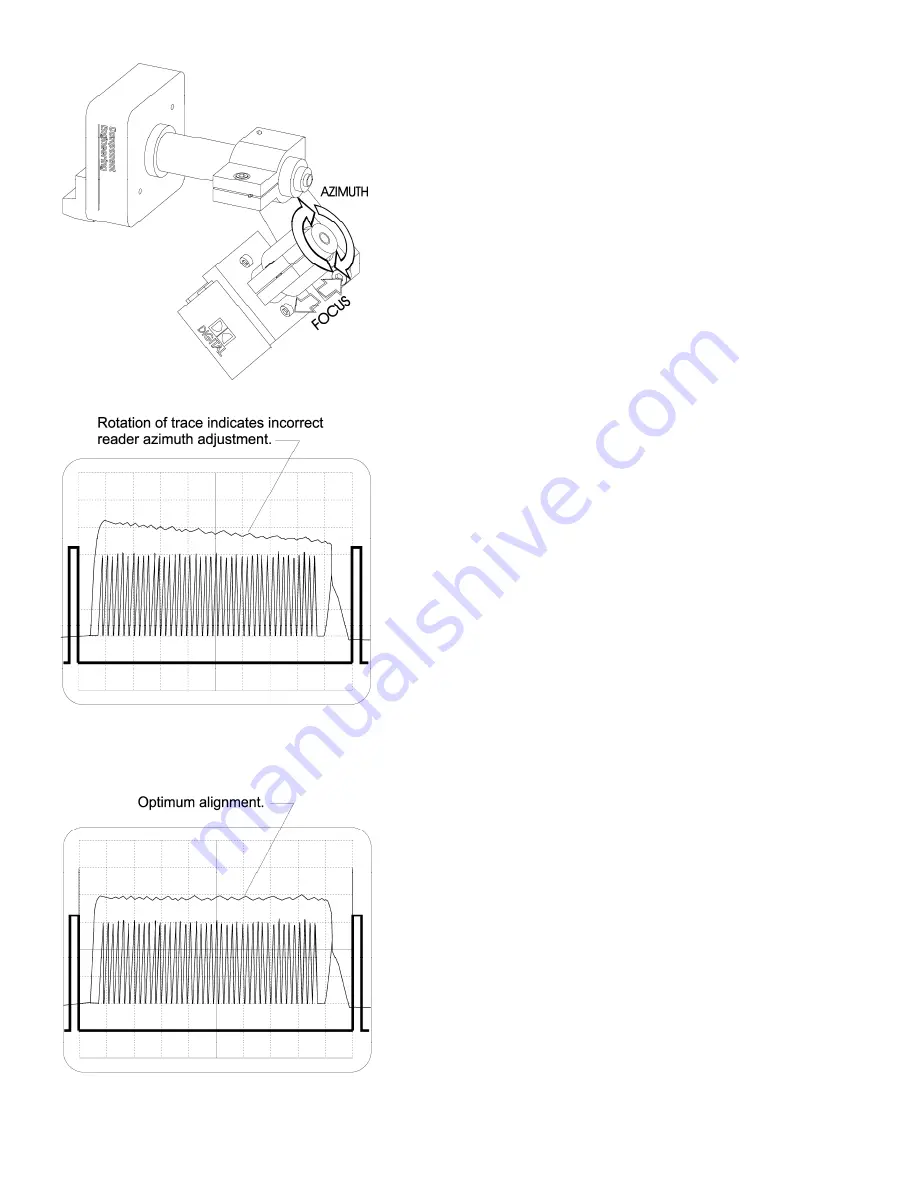
10
We are ready to
adjust
the
focus and azimuth of
the
digital
optics
. Because the optics have been preset, there is always the
chance that focus may be OK. Adjusting focus and azimuth are
similar for digital and analog. The reader clamp is loosened and
the reader is moved forward or back to adjust focus. When using
the ‘scope a correct digital burst, the “Grass”, will be in good
focus and the center area will be somewhat darker, exhibiting
“hollowness”. Using DRAS you are looking for the highest
“focus” number. Expect to achieve high 60s to 70s with our reader.
Azimuth adjustment is difficult when using only a ‘scope. Rotate
the reader to adjust for the flattest perf trace and the lowest error
rate on the processor display. Large azimuth errors are seen as a
tipping of the ‘scope sprocket hole trace. The axis will be the
center of the displayed perf trace. The DRAS azimuth number you
are looking for is as close to zero as possible. Retighten the clamp
screw when both focus and azimuth have been optimized.
Final:
Analog:
You are ready to go back and double-check the analog setup. Start
as you did before by checking lateral position. It should not have
changed, but if it has, it is OK to refine it. Make sure your Dolby
Tone, equalization, scanning beam illumination and lateral guide
are still correct.
Digital:
The last step is to fine adjust the rotation of the digital LED to
minimize the unevenness of the sprocket hole trace. Now run a
piece of film with a good sound track and go sit in the theater and
“test” some really fine sound.
Содержание STRD-30C
Страница 12: ...11...






























